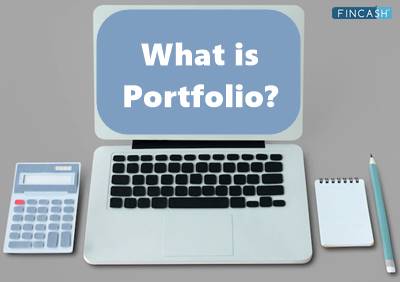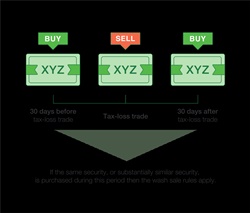Defining Portfolio
Whether you realise it or not, you have a portfolio if you hold Financial Assets. A portfolio is made up of all of your assets, including stocks, Bonds, Real Estate, cash and other financial assets.

By monitoring and managing your investment portfolio, you can establish a substantial corpus to satisfy various Financial goals. However, to do so, you must begin Investing soon. After all, starting soon will allow you to optimise your returns over a more extended period of time.
Through this post, let's shed some light on what is a portfolio, its essential components and how it is helpful in your investments.
What is a Portfolio?
A portfolio is a broad concept that can refer to any financial assets, such as real estate or gold, but it is most commonly used to refer to the sum of all your Income-generating assets.
Bonds, shares, currencies, cash and Cash Equivalents, and commodities are all examples of financial assets that can be found in an investor's investment portfolio. It can also be defined as a group of investments used by an investor to make a profit while preserving funds or assets.
Components of Portfolio
The different types of assets that make up a portfolio are known as asset classes. The investor or financial adviser must ensure that there is a proper mix of assets to preserve balance, which promotes Capital growth while minimising or controlling risk.
The following are the major components of a portfolio:
Stocks
Stocks are the most prevalent type of investing. They refer to a piece of a company or a part of it. They signify that you, being a stockholder, are a part-owner of the business. Stocks act as a source of income because when a company makes a profit, it pays dividends to its shareholders. Furthermore, once bought, shares can be sold at a higher price if the firm succeeds.
Bonds
When you buy bonds, you are essentially lending money to the bond issuer, which might be the government, a company, or an agency. A maturity date is a day on which the principal amount used to purchase the bond will be repaid, including the interest charged. In comparison with stocks, bonds are less risky and lower potential returns.
Alternative Investments
Gold, oil, and real estate are examples of alternative investments whose value can increase and multiply. Alternative investments, unlike standard investments, like stocks and bonds, are sometimes less extensively traded.
Talk to our investment specialist
How Does an Investment Portfolio Work?
An investment portfolio can assist you in growing your money to meet future objectives, such as establishing a secure retirement fund. The basic assumption is that you buy investments that grow in value over time, and as a consequence, you make money. Here are some of the key features of an investment portfolio:
Asset Allocation
It refers to how you select to invest in assets for your portfolio and the sorts of assets you acquire. Stocks, bonds, and Cash and Cash Equivalents are the three primary types of assets. You have a variety of options inside each primary category. The equities category includes individual stocks, Exchange-Traded Funds (ETFs), and managed Mutual Funds.
Diversification
You can diversify your portfolio by buying a variety of investments across a wide Range of asset classes to prevent being unduly exposed to losses inside a single firm or Industry.
Types of Portfolios
Investment portfolios come in different types. Each kind corresponds to a certain investing aim or approach and a level of risk tolerance. The following are some of them:
1. Growth Portfolio
A growth portfolio, often known as an aggressive portfolio, is taking on more Financial Risk in exchange for a higher potential return. When opposed to bigger, well-established organisations, growth investing frequently entails investments in younger companies with greater growth potential.
Investors in growth portfolios are ready to put up with short-term changes in their assets' Underlying value if it represents a higher chance of long-term financial gain. In case you have a high-risk tolerance or wish to invest for the long term, this is the portfolio for you.
2. Income Portfolio
An income portfolio's purpose is to create recurring passive income. Rather than looking for investments that would provide the most long-term financial gain, investors seek investments that will produce consistent dividends while posing little risk to the underlying assets that generate those payouts.
If you are risk cautious or planning to invest for a short to medium tenure, then this is the portfolio for you.
3. Value Portfolio
An investor in a value portfolio takes advantage of inexpensive assets by valuing them. They are particularly beneficial during bad economic times when many firms and investments are struggling to stay afloat.
Investors look for firms that have profit potential but are now priced below their Fair Market Value, as determined by analysis. In a nutshell, Value investing is concerned with finding deals in the Market.
4. Defensive Portfolio
A defensive portfolio is made up of stocks with low Volatility to reduce losses in the case of a market crash. Risk and potential returns are frequently smaller in defensive portfolios.
These portfolios are ideal for long-term investments since they provide slower but more consistent returns.
5. Balanced Portfolio
One of the most common investing techniques is a well-balanced portfolio. The goal of this strategy is to minimise volatility. It mostly consists of income-producing, moderate-growth companies and a significant part of bonds.
No matter which direction the market moves, a combination of stocks and bonds can help you limit risk. A person with a low to moderate risk tolerance and a mid-to-long-term time horizon will benefit from this portfolio.
Factors Affecting Portfolio Allocation
The following factors have a significant impact on how an investor allocates their portfolio:
Risk Tolerance
Risk appetite varies from person to person. Some people enjoy taking risks, while others prefer the assurance of knowing their money will be there when they need it. The way you create your risk tolerance heavily influences your portfolio.
A risk-averse investor may prefer Bonds and Index Funds. On the other hand, real estate, individual equities, and small-capitalisation mutual funds may appeal to those with higher risk tolerance.
Time Horizon
The time horizon in which money is invested in a particular investment choice is crucial for developing a lucrative portfolio. Investors should change their portfolios to attain a more conservative Asset Allocation mix; soon, they get near to their financial goals.
It's used to keep their investment portfolio's accrued Earnings from degrading. The duration of time you anticipate to need the money you invest is referred to as your time horizon. Your time horizon is 30 years. If you're saving for retirement, that'll be around 30 years away. As your time horizon shortens, experts typically advise lowering the risk in your portfolio.
Need for Portfolio Management
To optimise the value of your investment portfolio, you must be actively involved in portfolio management as an investor. Let's look at why portfolio management is necessary:
- Investors can create the ideal Investment plan for their income, financial objectives, age, and risk tolerance with sound portfolio management
- Portfolio management reduces investment risks while also increasing the likelihood of return
- Portfolio managers analyse a client's financial requirements and provide the best risk-adjusted investment strategy
- It also allows portfolio managers to give tailored investment solutions based on customers' specific needs and requirements
The Bottom Line
Consider your asset allocation carefully while putting together your investing portfolio. Check whether it fits your risk appetite. This metric measures your ability to cope with market volatility. Stocks, for example, are regarded to be more volatile asset types. On the other hand, bonds and CDs are regarded to be safer investments. Assess your time horizon, or how much time you have until you'll need the money.
All efforts have been made to ensure the information provided here is accurate. However, no guarantees are made regarding correctness of data. Please verify with scheme information document before making any investment.













Good i know and help to you